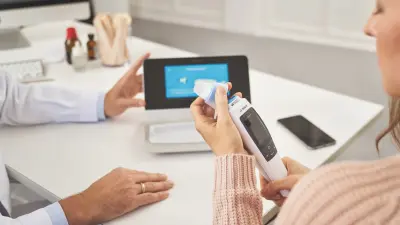Medical technology at Bosch
Electrotherapy, hearing aids, and high-tech laboratory diagnostics
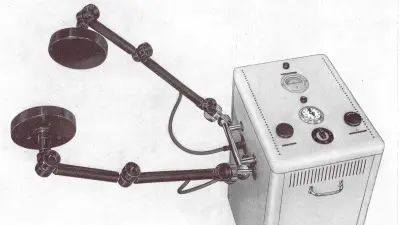
Robert Bosch believed good health was paramount. In his activities as an entrepreneur, he worked with various areas of medical technology, laying the groundwork for later product innovations — from electromedical therapy devices to fully automated analytical methods for molecular diagnostic testing.
Dr. Königshofer, an eye care professional working in Stuttgart, was entirely satisfied, as he wrote to Vereinigte Physikalisch-Mechanischen Werkstätten Reiniger, Gebbert & Schall, which was based in Erlangen, New York, and Stuttgart. The electrically illuminated eye mirror and electrostatic machine he used for pain treatment both worked reliably with three to four rounds of service annually. The person responsible for sales and maintenance of these electromedical devices in and around Stuttgart was none other than young entrepreneur Robert Bosch, with his Workshop for Precision Mechanics and Electrical Engineering.
Electromedical devices of all kinds were very popular as the 19th century drew to a close, so it made sense for Bosch to get involved and build a second major line of business in this area. Even so, it was not long before he stopped working as a representative for these medical technology products, instead devoting himself entirely to building electrical equipment after his first few successful orders.
Early electrotherapy
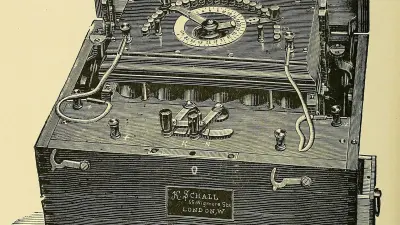
The plunge battery
Indispensable for early electrotherapy around 1900: the so-called plunge battery. When the lid was opened, carbon zinc elements were immersed in a chromic acid solution, thus generating the current for stimulation current therapy.
Bosch began actually developing and producing medical technology in the late 1940s. The starting point for this new product segment was the company’s existing capabilities in radar and radio technology. The first shortwave treatment devices were built in 1947, followed not long afterward by microwave equipment. Named “Radarmed” in a nod to their origins in radar technology, the new units used high-frequency electricity to generate heat in bodily tissue, alleviating pain and stimulating the circulation.
The Omniton hearing aid was launched on the market in 1949. Years of experience with radio tubes went into this new product, as tubes in miniaturized form now helped to amplify signals in hearing aids as well.

The two areas — hearing aids and electromedicine — swiftly expanded development capacity, and in 1952, they formed the basis for the medical technology division. Located right next door to the electronics research unit at Bosch, medical products were among the first to benefit when new technologies were developed. Transistors took the place of tubes in hearing aids in 1954, and a new generation of tiny full transistor hearing aids came out in 1955. In the decades that followed, new components brought behind-the-ear (BTE) and in-the-ear (ITE) hearing aids that were ever smaller and lighter while also being highly reliable.
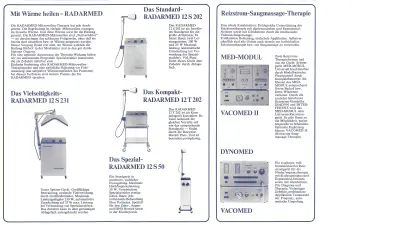
Microwave therapy also became established with a broader range of different devices. In the 1970s, the range of electromedical equipment on offer expanded to include equipment for cardiovascular diagnosis, electrical muscle stimulation, and warming donated blood, along with ergometers. Bosch also offered blood pressure monitors, electronic thermometers, and ultrasound inhalation devices to support patients at home.
Although sharp international competition brought a push to streamline the product range in the 1980s, medical technology remained an important part of the company. In the early 1990s, Bosch decided to pause its activities in this field, mainly for strategic reasons: after the divisions were realigned, there was no longer a place for hearing aids and electromedical devices in the portfolio.
However, medical applications had been developed not only by the medical technology division, but often in other operating units as well — such as in materials research, where high-performance plastics were developed for artificial hip joints, and in the development of video technology for operating rooms. The first step toward re-entering this segment came in 2003, with a telemedicine project from the area of communication and security technology.
The Bosch Communication Center began providing 24-hour cardiovascular monitoring service for high-risk patients. Other projects to support and monitor patients ultimately led to the establishment of a separate company in 2009.
Healthcare-related topics have been handled by a new subsidiary called Bosch Healthcare Solutions GmbH since 2015. This company relies on the Bosch core competencies as it develops healthcare products and services: sensors to collect data, software to evaluate that data, and services based on this data analysis.
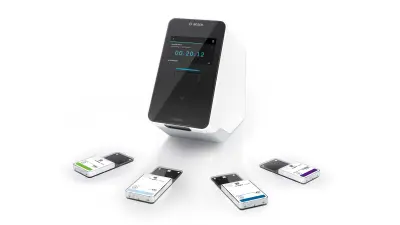
The company’s outstanding technological expertise and ability to apply it exactly where it is needed also became apparent at the start of the coronavirus crisis. The Bosch Vivalytic analyzer was available as a compact, intuitively operated all-in-one platform that could perform various molecular diagnostic tests and, in particular, meet new testing requirements as well. A rapid PCR test for Covid-19 was developed for the Vivalytic analyzer in a fast-track program in February 2020, and the overall Vivalytic system proved its value directly.
Alongside further developing and refining universal fully automated lab diagnostic solutions, Bosch Healthcare Solutions currently works extensively with connected medical devices and systems and with medical components made of high-performance ceramics.
Author: Bettina Simon

